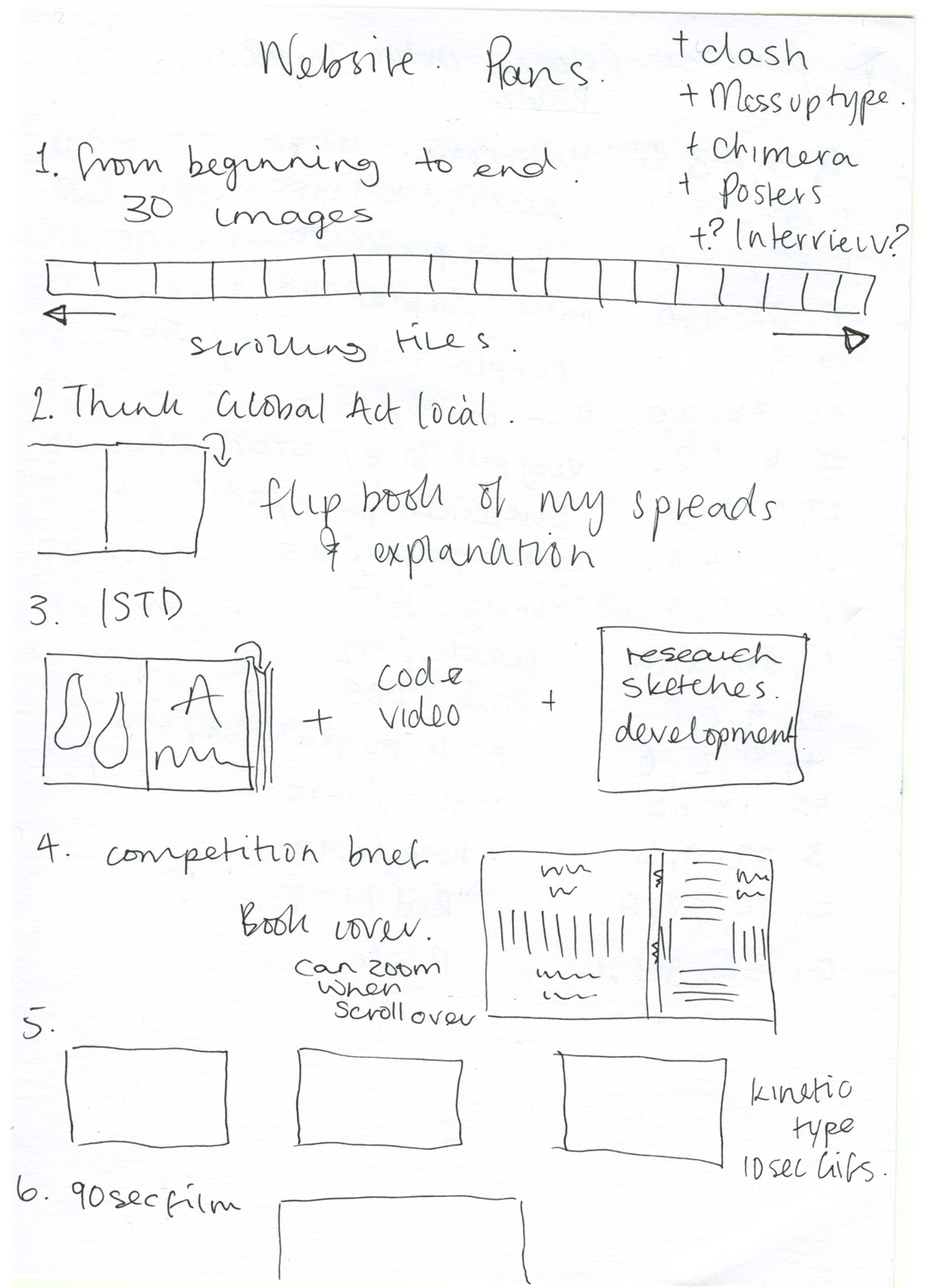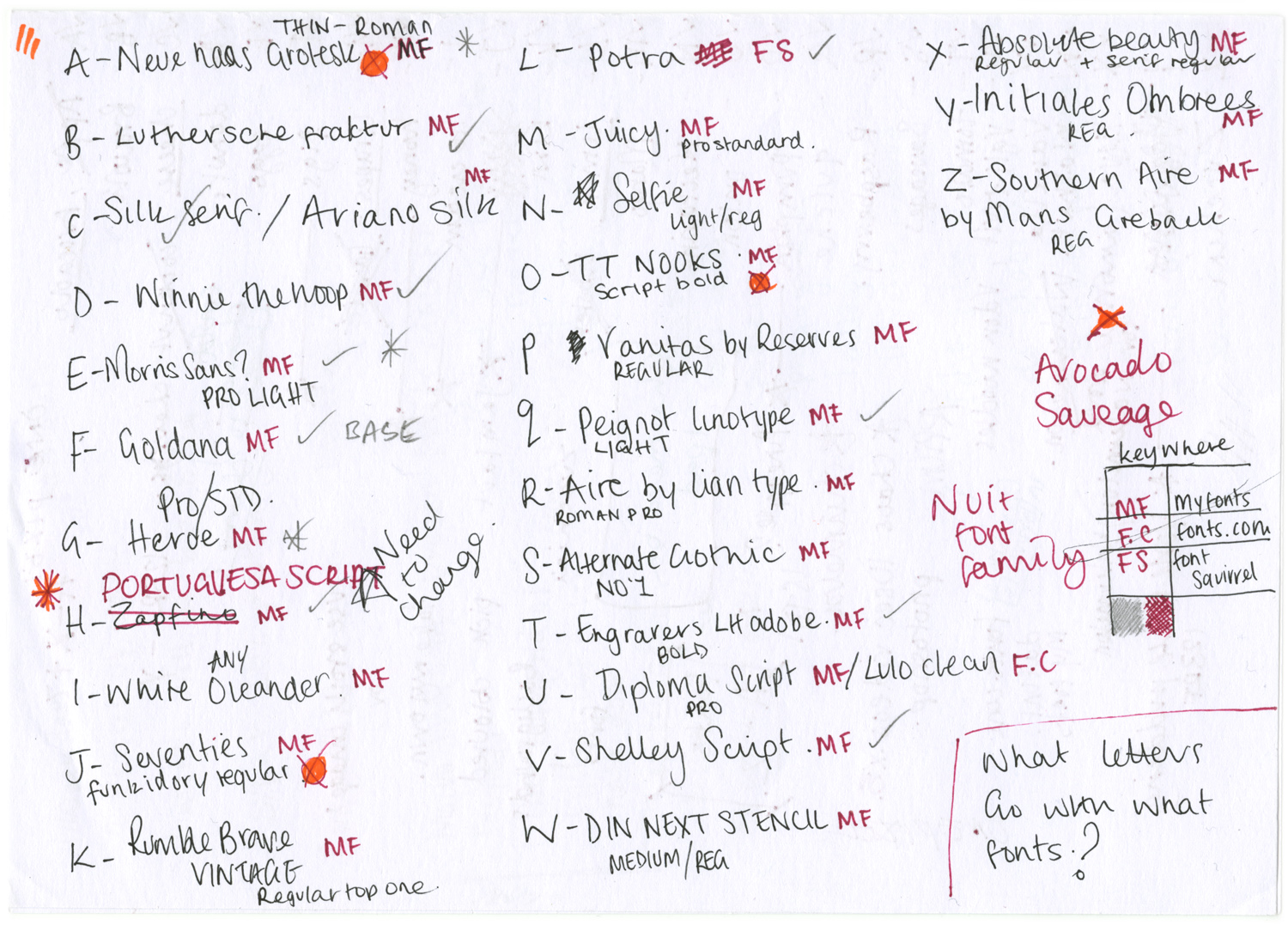ISTD Lost Font
I started my project on lost symbols and hieroglyphics of Egypt as they are a lost art. I read Stephane Rossini’s book on Egyptian hieroglyphics and how to read and write them. This made me think about symbolism and what symbols are in use today. One of the most important ones being road signs – designed by Margaret Calvert and Jock Kinneir. We also use emoji’s and gifs to communicate which is another form of displaying visual language that is easy for us to understand. This made me think of language and education – we learn language and how to communicate at such a young age, we learn simple letters, shapes, colours and foods. We are taught to be very visually aware from such a young age. However, I feel one key point is missed / lost from when learning language. I thought to myself how we can begin to teach developing children about fonts at such a young age… it’s a tricky thing! I read Sarah Hyndman’s book Why Fonts Matter – she talks about how typography influences and evokes an association. So, I selected my audience as 0-5-year-old children, who are developing their knowledge of language and communication. I wanted to teach children fonts by linking them to foods by the way they look, so it is easy to remember, and it introduces them to learning shapes and the associations between words and images.
A to Z of Foods and Fonts – 26 foods and 26 fonts with the 26 letters of the alphabet. My book features thick durable paper, with easy to turn pages, and tough hard back outer cover for all the bumps it will get along the way through young children reading it. It is also specifically bright coloured to excite and visually enhance the images. I think the book printed is a great outcome and is visually very satisfying. I feel it fits my target audience well and I enjoyed creating it – it also taught me a lot about the importance of fonts.


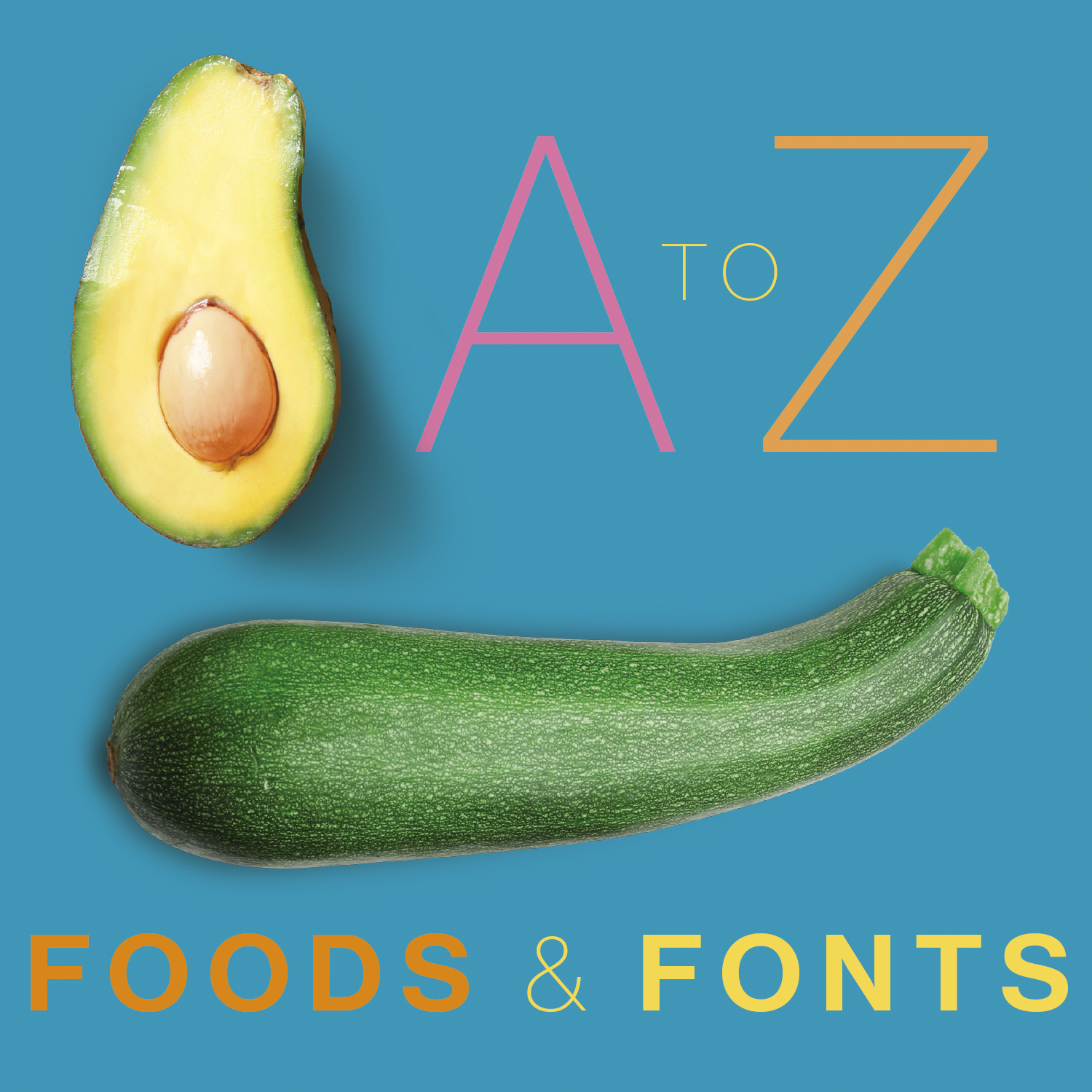

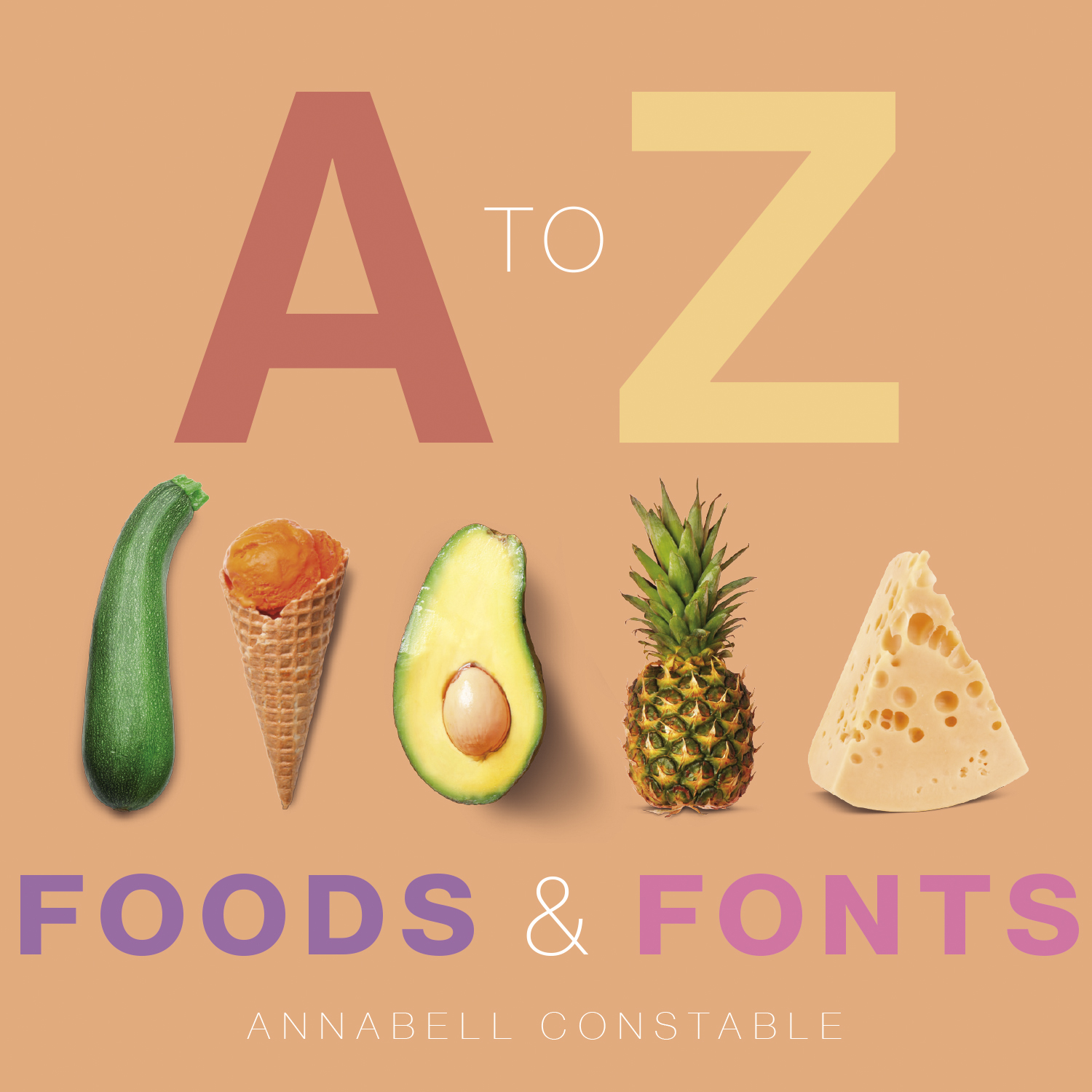
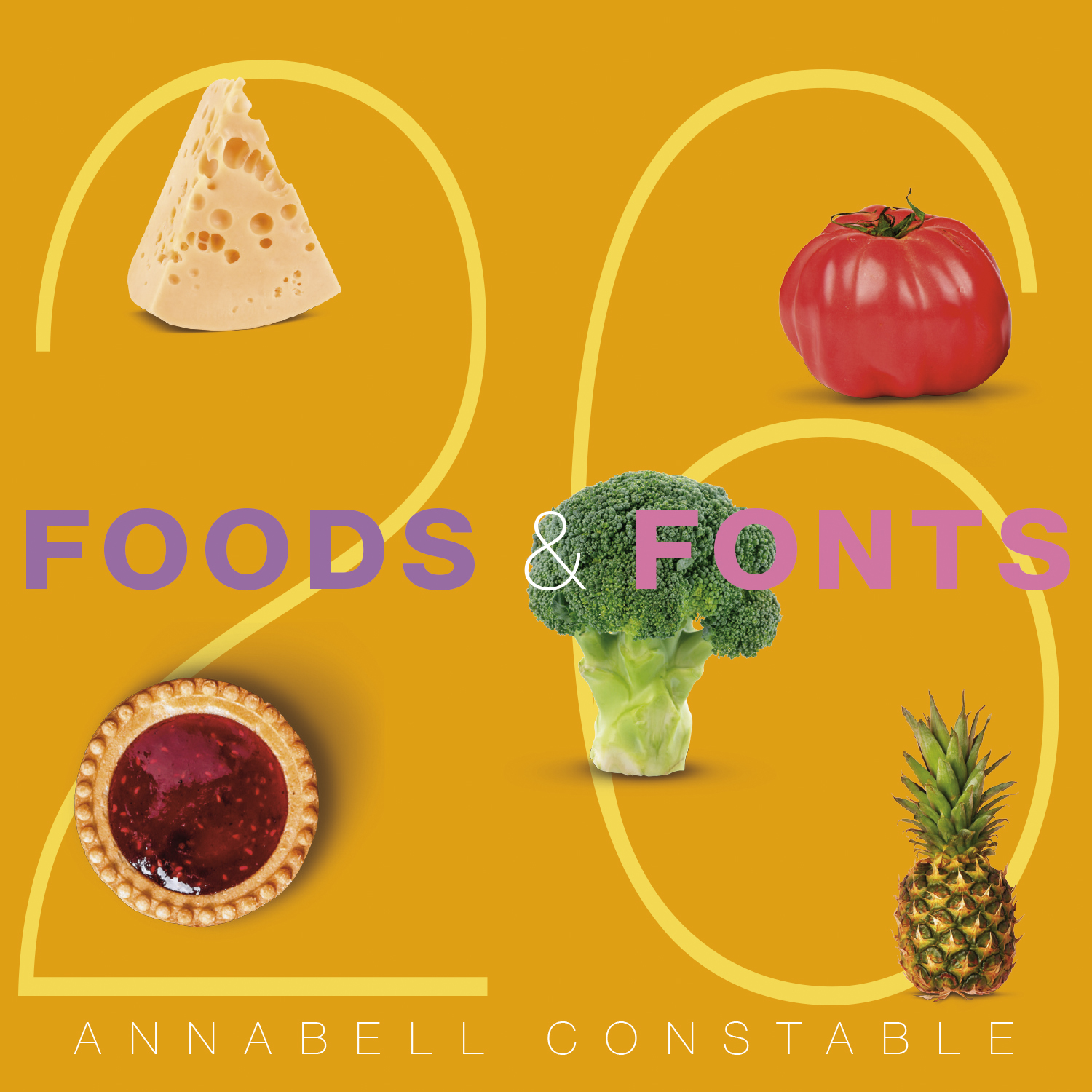
I also tied in my ISTD with coding. I created code that teaches children how to type to accompany my book. When they press any letter key on the keyboard it will show the related image of a food that starts with the letter that they pressed. For example, letter A will show a picture of an avocado on the screen. This applies for all keys A to Z, and all images are taken from the book for fluidity in content and remembrance for children. It is a simple way to begin to familiarise the keyboard to young children in school. To see the code in action please go to coding on navigation.

